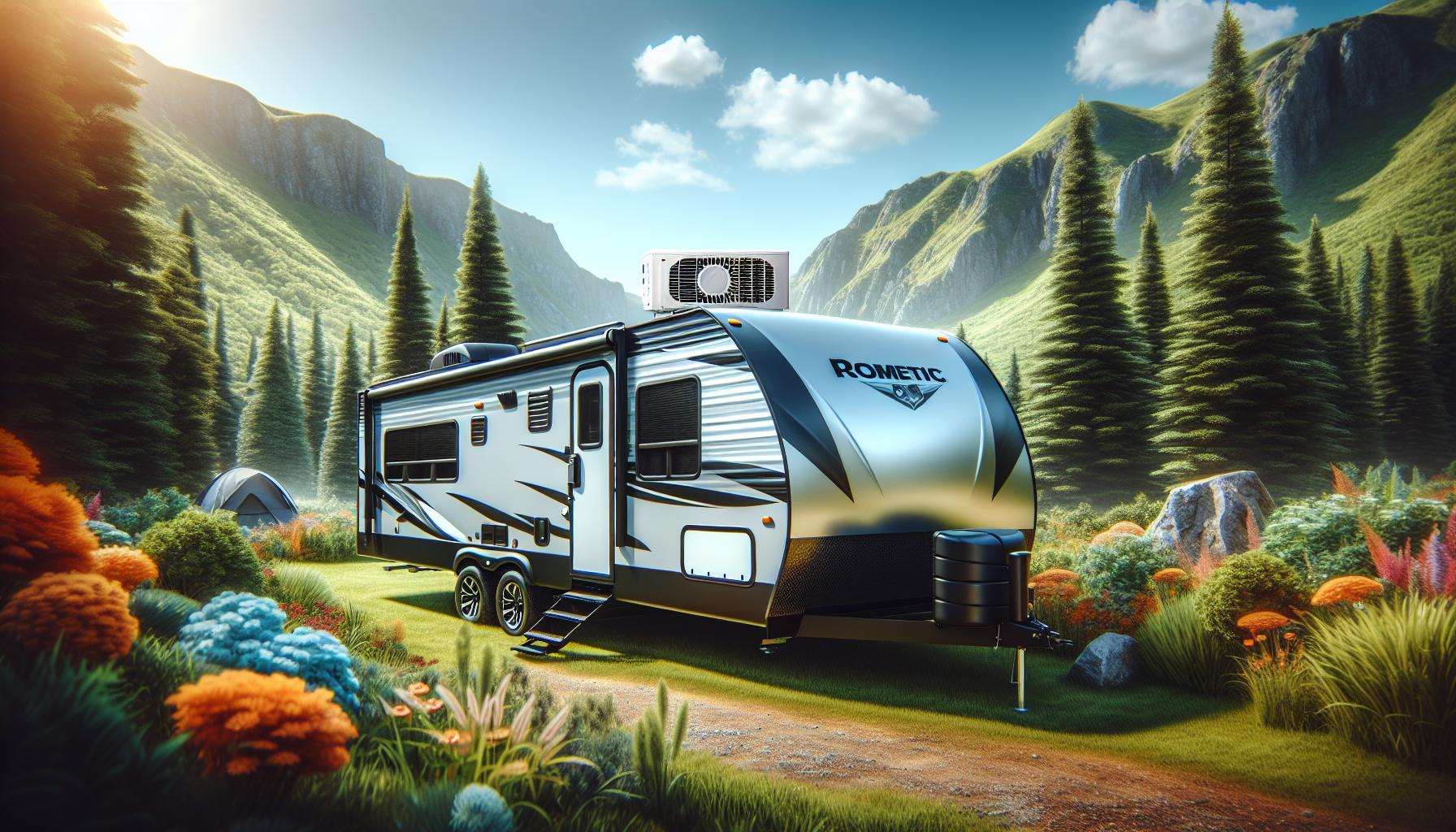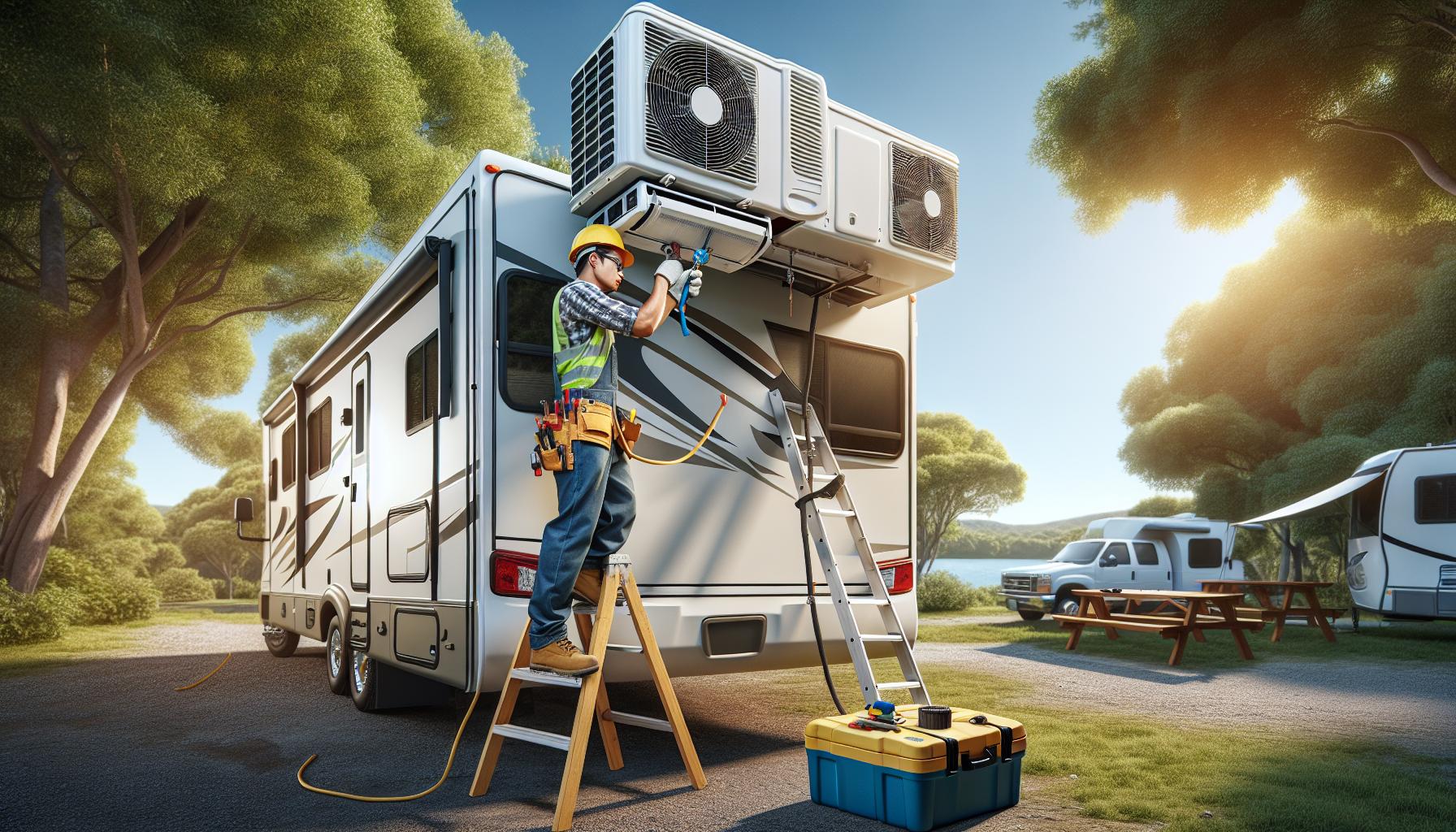When summer hits and the temperatures soar, a reliable travel trailer air conditioner becomes every RVer’s best friend. Nobody wants to spend their vacation sweating inside their mobile sanctuary while dreaming of cooler days. It’s like having a portable oasis that transforms a potential sauna into a comfortable retreat.
Choosing and maintaining the right AC unit for a travel trailer isn’t just about pushing a few buttons and hoping for the best. From BTU ratings to power consumption these cooling companions require careful consideration. Whether someone’s planning a cross-country adventure or simply preparing for weekend getaways they’ll need to understand how these essential cooling systems work to keep their home-on-wheels comfortable in any climate.
Understanding Travel Trailer Air Conditioners
Travel trailer air conditioners come in various configurations specialized for mobile living environments. These units incorporate distinct features tailored to withstand constant movement while delivering reliable cooling performance.
Types of RV Air Conditioning Units
RV air conditioners divide into three primary categories: rooftop units, under-bench units, and split systems. Rooftop models mount directly on the trailer’s roof, saving interior space while providing efficient cooling distribution. Under-bench units install inside storage compartments, offering a lower center of gravity and reduced wind resistance. Split systems separate the condenser and evaporator components, allowing flexible installation options with quieter operation.
BTU Ratings and Cooling Capacity
BTU ratings determine an air conditioner’s cooling power, with most travel trailer units ranging from 11,000 to 15,000 BTUs.
| BTU Rating | Trailer Size | Cooling Capacity |
|---|---|---|
| 11,000 BTU | Up to 25 ft | 250 sq ft |
| 13,500 BTU | 26-35 ft | 350 sq ft |
| 15,000 BTU | 36+ ft | 450 sq ft |
Factors affecting cooling capacity include trailer insulation, window count, occupant numbers, and local climate conditions. Higher BTU units cool larger spaces faster, though they consume more power during operation.
Best Travel Trailer Air Conditioner Brands

Leading manufacturers produce specialized air conditioning units designed for travel trailers, offering various features and cooling capacities to match different needs and preferences.
Dometic vs Coleman Comparison
Dometic and Coleman represent the top-tier manufacturers in travel trailer air conditioning. Dometic’s Brisk II series delivers 13,500 BTUs of cooling power with a compact design that reduces drag during travel. Coleman’s Mach series provides 15,000 BTUs through their premium models, featuring enhanced airflow distribution and reduced noise levels.
| Feature | Dometic Brisk II | Coleman Mach |
|---|---|---|
| BTU Rating | 13,500 | 15,000 |
| Weight | 72 lbs | 85 lbs |
| Noise Level | 67 dB | 65 dB |
| Power Usage | 2,900 watts | 3,100 watts |
Budget-Friendly Options
RecPro and Atwood manufacture cost-effective air conditioners without compromising essential features. RecPro’s AC units start at $600 offering 13,500 BTUs of cooling capacity. Atwood’s non-ducted models provide 11,000 BTUs at competitive prices around $700.
| Brand | BTU Rating | Price Range |
|---|---|---|
| RecPro | 13,500 | $600-$800 |
| Atwood | 11,000 | $700-$900 |
| Advent | 13,500 | $550-$750 |
| GE | 13,500 | $650-$850 |
Installation and Mounting Considerations

Installing a travel trailer air conditioner requires careful attention to system compatibility, electrical specifications, and proper mounting techniques to ensure optimal performance and safety.
Rooftop vs Non-Ducted Systems
Rooftop systems mount directly on top of the travel trailer through a standard 14×14 inch opening, distributing cool air through ceiling vents. These units offer efficient cooling by utilizing gravity for condensation drainage and maximizing interior space. Non-ducted systems connect to a single indoor unit, blowing air directly into the living space through a central outlet. The installation process for rooftop units involves reinforced ceiling supports, weatherproof sealing, and proper insulation placement. Non-ducted systems require less structural modification but occupy valuable interior space and demand strategic placement for optimal airflow distribution.
Power Requirements and Wiring
Travel trailer air conditioners operate on either 115V or 230V AC power systems, drawing 12-16 amps during normal operation. A dedicated 20-amp circuit protects the electrical system from overload risks during peak usage periods. Proper wiring includes:
- 12-gauge copper wire for runs under 25 feet
- 10-gauge copper wire for longer distances
- Ground fault circuit interrupter (GFCI) protection
- Weather-resistant electrical connections
| BTU Rating | Average Amp Draw | Required Circuit |
|---|---|---|
| 11,000 | 12 amps | 20 amp circuit |
| 13,500 | 14 amps | 20 amp circuit |
| 15,000 | 16 amps | 30 amp circuit |
Maintenance Tips for Optimal Performance
Regular maintenance extends the lifespan of travel trailer air conditioners while ensuring consistent cooling performance. Proper care prevents costly repairs and maintains energy efficiency throughout the camping season.
Cleaning and Filter Replacement
Air conditioner filters require monthly cleaning during active use periods. Remove visible debris from the filter using a vacuum cleaner with a soft brush attachment. Wash reusable filters in warm soapy water and let them dry completely before reinstallation. Replace disposable filters every 3 months or after 90 days of use.
Clean the exterior condenser coils twice per camping season using a specialized coil cleaner. Apply the cleaner and rinse thoroughly with a gentle water spray, avoiding direct pressure that might damage the fins. Check the condensation drain pan weekly for blockages and clear any accumulated debris.
Troubleshooting Common Issues
Strange noises indicate loose components or debris in the system. Inspect mounting bolts and tighten them to manufacturer specifications. Poor cooling performance often stems from dirty filters, blocked vents or low refrigerant levels. A frozen evaporator coil points to restricted airflow or a malfunctioning thermostat.
The unit cycling on and off frequently suggests incorrect thermostat settings or an oversized system. Check electrical connections for signs of corrosion or damage when the unit fails to start. Measure voltage at the power source to confirm proper electrical supply. Contact a certified RV technician for refrigerant-related issues or electrical problems that persist after basic troubleshooting.
Energy Efficiency and Power Consumption
Travel trailer air conditioners consume significant electrical power to maintain comfortable temperatures. Understanding power requirements helps optimize energy usage while ensuring effective cooling performance.
Solar Power Compatibility
Modern travel trailer air conditioners integrate with solar power systems through specialized inverters rated at 2000-3000 watts. A minimum solar array of 600 watts powers basic 13,500 BTU units during peak sunlight hours. High-efficiency models feature smart controllers that adjust compressor speeds based on available solar power. Premium inverter units from Dometic draw 25% less startup amperage compared to traditional models. Solar-compatible air conditioners operate with:
- Lithium battery banks (200Ah minimum capacity)
- MPPT charge controllers for optimal power conversion
- Pure sine wave inverters rated for AC motor loads
- Smart monitoring systems displaying real-time power usage
- Dual-mode operation switching between solar & shore power
Battery Usage Guidelines
Battery-powered operation requires specific power management strategies to maintain cooling efficiency. Deep-cycle batteries provide 2-4 hours of runtime for 13,500 BTU units drawing 14-16 amps. Power consumption varies by mode:
| Operating Mode | Amp Draw | Runtime (200Ah Battery) |
|---|---|---|
| High Cool | 14-16A | 2-3 hours |
| Low Cool | 10-12A | 3-4 hours |
| Fan Only | 2-3A | 15-20 hours |
- Operating AC units at temperatures above 75°F
- Monitoring battery voltage levels hourly
- Running generator backup at 50% battery capacity
- Installing battery temperature sensors
- Using programmable thermostats for cycling
Conclusion
A well-functioning travel trailer air conditioner transforms any camping experience from potentially uncomfortable to truly enjoyable. Modern AC units offer various options to suit different needs and budgets while providing reliable cooling performance in mobile environments.
Proper selection maintenance and power management ensure optimal cooling throughout the camping season. Whether choosing a rooftop unit split system or under-bench model the key lies in matching the BTU rating with trailer size and understanding power requirements.
With the right unit and regular care travelers can enjoy comfortable temperatures during their adventures regardless of the weather outside. The investment in a quality travel trailer air conditioner pays off in countless comfortable nights and memorable experiences on the road.




